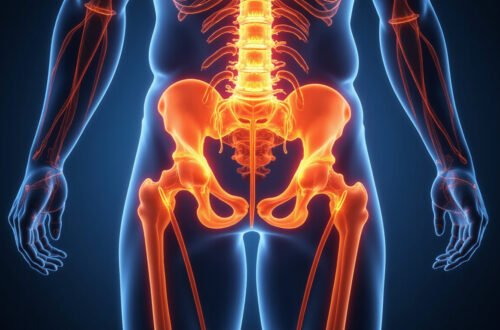In our day-to-day lives, we often experience discomfort and tightness in our bodies, which can severely impact our mobility and overall quality of life.
This is where nerve glides come into play.
If you’re looking for an effective method to alleviate pain and enhance flexibility, understand that nerve glides are a powerful tool.
In this article, we will explore what nerve glides are, the science that underpins these techniques, and their numerous benefits, as well as tips to safely incorporate them into your daily routine.
Your Sciatica Pain-Free Future Starts Here – Click to Learn More!
Key Takeaways
- Nerve glides are specialized exercises designed to improve the mobility of nerves and surrounding tissues.
- Understanding the science behind nerve glides can help enhance their effectiveness for pain relief.
- Incorporating nerve glides into your daily routine can significantly boost flexibility and reduce discomfort.
- Performing nerve glides safely is crucial to prevent injury and maximize benefits.
- To maximize the effectiveness of nerve glides, consider consistency and proper technique in your practice.
What are Nerve Glides?
Nerve glides are a series of gentle, controlled movements designed to mobilize nerves in order to maintain or improve their function.
These exercises are particularly beneficial for individuals experiencing nerve-related discomfort or dysfunction, such as those with carpal tunnel syndrome or sciatica.
The primary goal of nerve glides is to facilitate the sliding motion of the nerves within the surrounding tissues, helping to reduce stiffness and enhance nerve mobility.
By incorporating nerve glides into your daily routine, you can promote better circulation, decrease pain, and support overall nerve health.
Ultimately, understanding and practicing nerve glides can empower you to take proactive steps in managing nerve-related issues and improving your quality of life.
The Science Behind Nerve Gliding Techniques
Nerve glides are a series of gentle stretching exercises designed to alleviate nerve tension and promote optimal mobility along the pathways of the nerves.
Understanding the science behind these techniques is essential for both practitioners and patients seeking relief from discomfort associated with nerve impingements or entrapments.
When nerves become restricted, they may lead to symptoms like tingling, numbness, or pain in affected areas.
Nerve glides work by mechanically mobilizing the nerve tissues within their surrounding structures, thus enhancing blood flow, reducing inflammation, and improving the overall function of the nerves.
By incorporating nerve glides into rehabilitation programs, it is possible to facilitate nerve healing and enhance neuromuscular performance, making these techniques invaluable for recovery from injuries or conditions such as carpal tunnel syndrome or thoracic outlet syndrome.
‘The journey of a thousand miles begins with one step.’ – Lao Tzu
Benefits of Nerve Glides for Pain Relief
Nerve glides, also known as nerve mobilization exercises, are becoming increasingly recognized for their ability to alleviate pain.
These gentle movements are designed to glide the nerves through their surrounding tissues, helping to reduce tension and promote better nerve function.
One of the primary benefits of nerve glides is their effectiveness in treating conditions like carpal tunnel syndrome, sciatica, and thoracic outlet syndrome.
By incorporating nerve glides into your physical therapy routine, you may experience improved flexibility, reduced pain levels, and enhanced overall mobility.
Additionally, these exercises are easy to learn and can often be performed at home, making them a convenient option for ongoing pain relief.
Practicing nerve glides regularly not only aids in recovery but also helps prevent recurrence of nerve-related issues, promoting long-term health and well-being.
Your Sciatica Pain-Free Future Starts Here – Click to Learn More!
How to Perform Nerve Glides Safely
Nerve glides are an excellent way to promote the mobility of nerves, particularly in cases such as carpal tunnel syndrome, thoracic outlet syndrome, and other issues related to nerve entrapment.
However, performing nerve glides safely is crucial to ensure that you not only achieve the desired therapeutic effect but also prevent any potential injuries.
To start, it’s essential to warm up your body with gentle stretching or light aerobic activity to get the blood flowing.
When you begin your nerve glides, maintain a relaxed posture and use controlled movements.
For example, if you’re performing a median nerve glide, extend your arm out to the side with the palm facing up, gently bend your wrist backward while keeping your fingers straight.
It’s important to go just to the point of mild discomfort and never into pain.
If you’re unsure or experiencing significant discomfort, consulting with a healthcare professional or physical therapist can provide personalized guidance.
Remember, consistency is key, and incorporating these gentle, rhythmic nerve glides into your daily routine can significantly enhance your nerve function while ensuring safety.
Incorporating Nerve Glides into Your Daily Routine
Incorporating nerve glides into your daily routine can significantly enhance your overall mobility and reduce discomfort, especially for those who experience conditions like carpal tunnel syndrome or sciatica.
Nerve glides are gentle, rhythmic movements designed to facilitate nerve movement within the surrounding tissues, helping to alleviate symptoms of nerve entrapment.
To seamlessly integrate these exercises into your day, start by setting aside just a few minutes each morning or evening to focus on them.
You can perform simple exercises like the median nerve glide or the ulnar nerve glide while seated at your desk or during your morning coffee.
By making nerve glides a habit, you’ll not only promote better nerve health but also create an opportunity for breaks from your daily activities, ultimately improving your concentration and productivity.
Remember to listen to your body and consult with a healthcare professional before starting any new exercise regimen.
FAQs
What are nerve glides?
Nerve glides are gentle exercises designed to help mobilize nerves and improve their mobility through specific stretching and movement patterns.
They aim to reduce pain and enhance flexibility in the surrounding tissues.
How do nerve gliding techniques work?
Nerve gliding techniques promote the sliding movement of nerves within their surrounding tissues, which can help alleviate symptoms of nerve entrapment, improve circulation, and enhance nerve function.
What are the benefits of performing nerve glides?
The benefits of nerve glides include reduced pain and discomfort, increased flexibility and mobility, enhanced function of the affected limbs, and potential prevention of chronic nerve-related issues.
How can I safely perform nerve glides?
To safely perform nerve glides, start with gentle movements, listen to your body, avoid any positions that increase pain, and consider consulting a healthcare professional for guidance on technique and progression.
How can I incorporate nerve glides into my daily routine?
Incorporate nerve glides into your daily routine by setting aside a few minutes each day to perform the exercises, integrating them with your stretching or warm-up routines, and being consistent for the best results.






